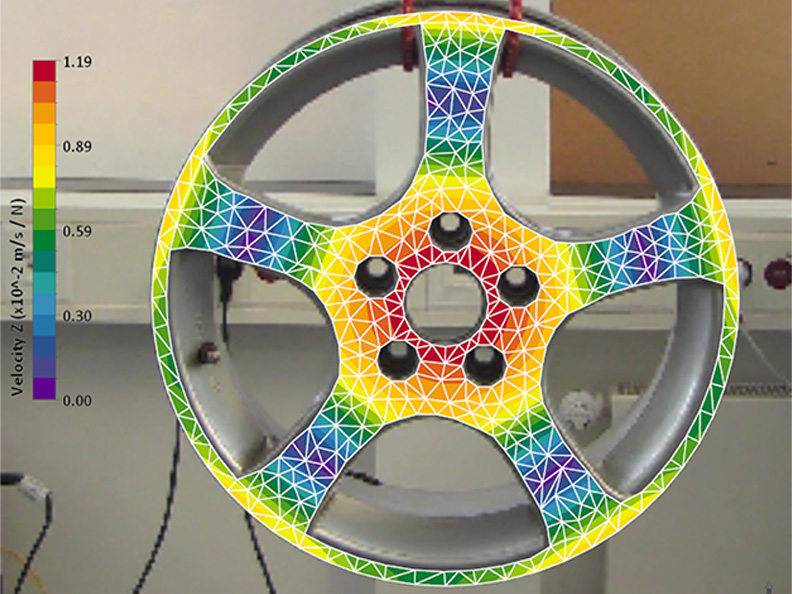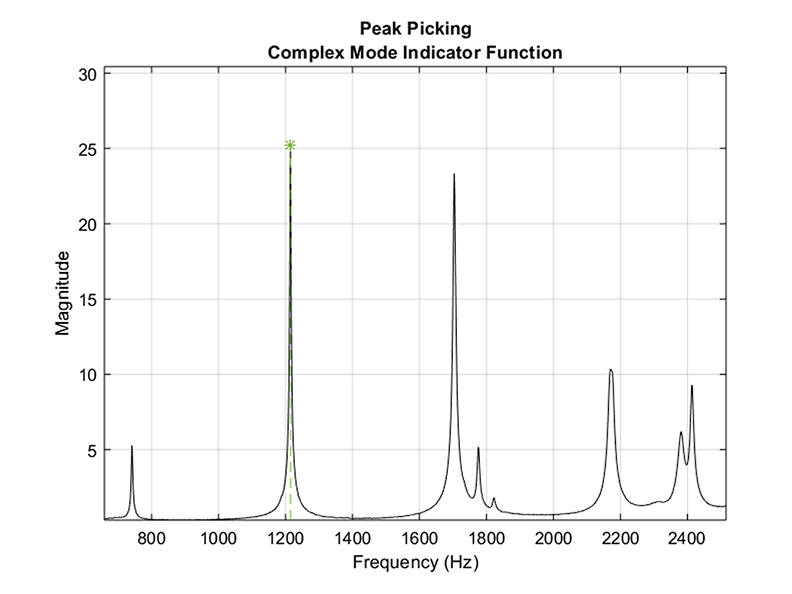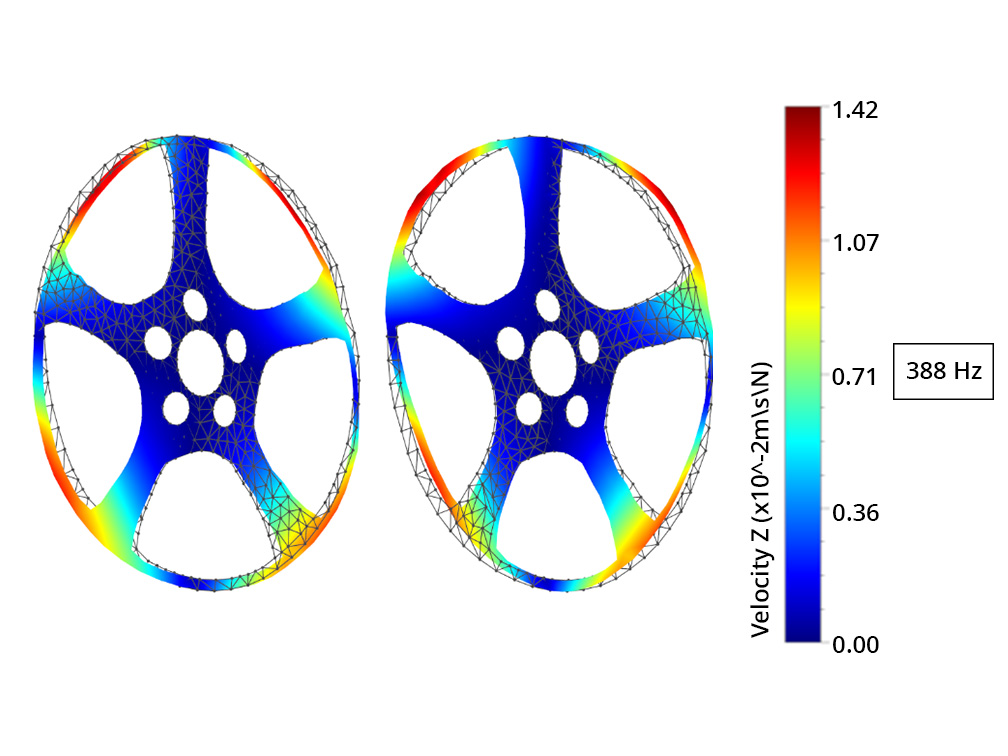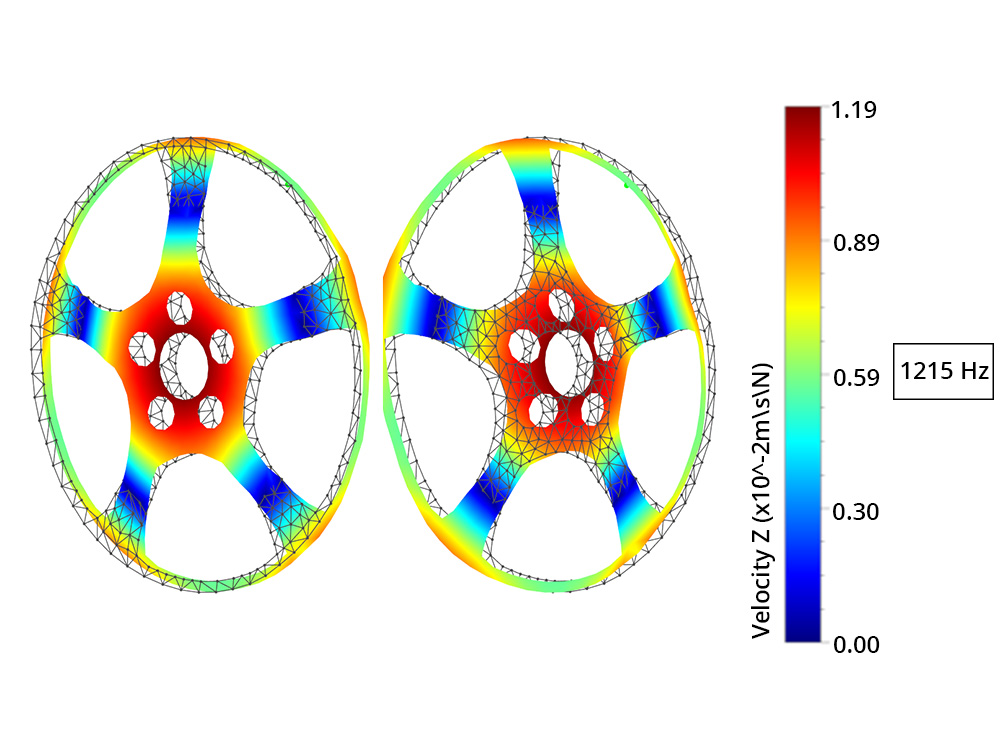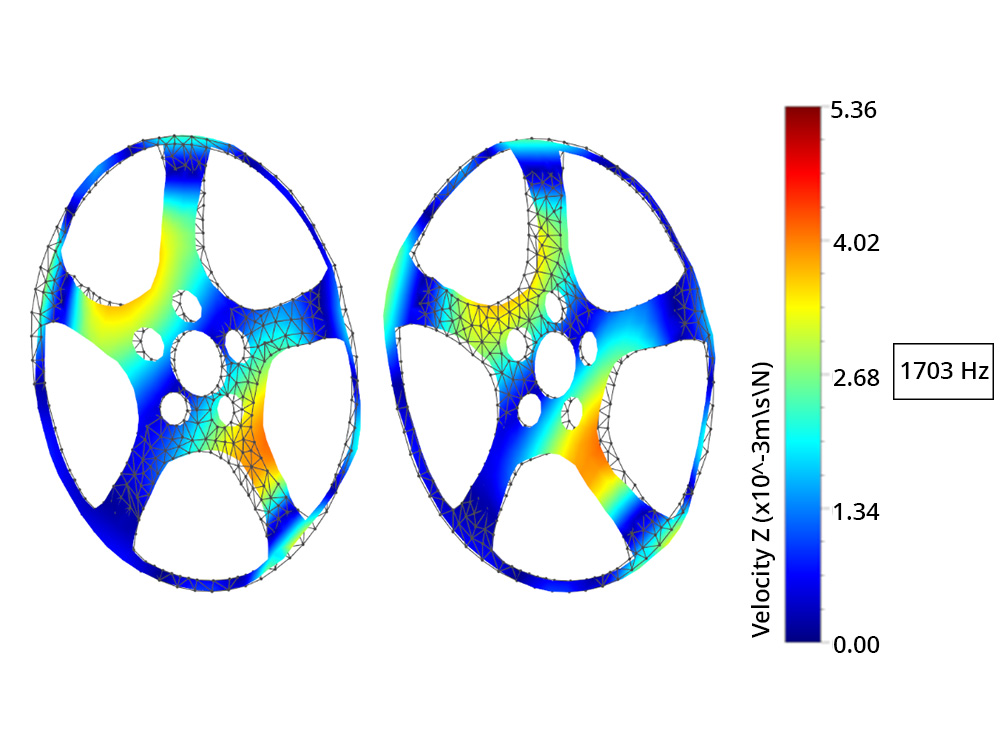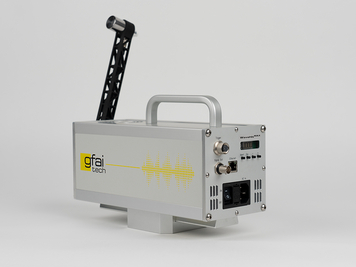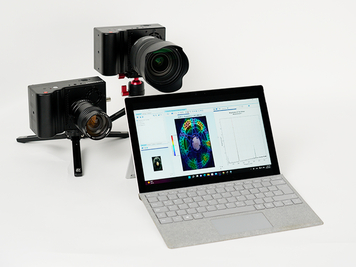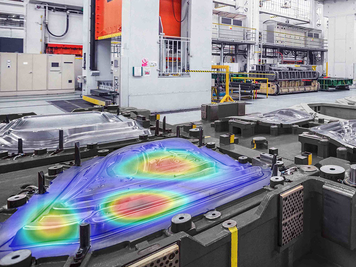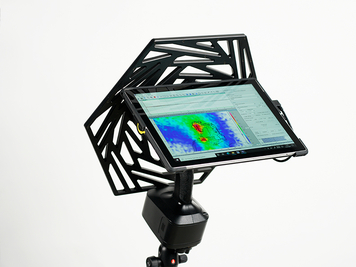The dynamic behavior of a mechanical structure can be described uniquely by its modal parameters (natural frequency, mode shape and damping). Modal analysis is the process of identifying these modal parameters, either experimentally (Experimental Modal Analysis, Operational Modal Analysis) or analytical (Finite Element Analysis).
These findings can be used to reduce unfavorable sound and vibration conditions, which are usually associated with resonance phenomena. In the case of resonance, for example, the operating forces excite natural frequencies and corresponding natural modes to oscillate, which can lead to resonance catastrophe and material failure. Modal analysis is thus an important tool in the development process and for prototype construction to identify and specifically eliminate operationally critical or acoustically unfavorable vibration modes of the structure. Among other things, this approach is important for compliance with safety standards, e.g. in automotive, aerospace or civil engineering.

